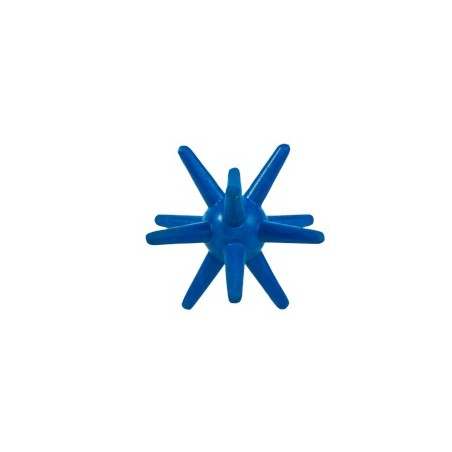Alternatives to farrowing crates should improve sow welfare by allowing sows more freedom of movement and promoting nest building and maternal behaviour; however, alternative systems should also be designed to protect the piglets.
Free farrowing systems are carefully designed to reduce the risk of crushing and give paramount importance to the quality of the space used by the sow and her piglets.

There are 3 main types of free farrowing systems indoor (www.freefarrowing.org):
- Temporary crating: The sow can turn around but can be temporarily restrained around farrowing.
- "Zero confinement" individual crates: The sow is housed individually, and she is not crated at any time. Simple pens are built with the same layout as the largest conventional farrowing crates but with no restraining and with some features to protect piglets from crushing. Some pens are larger and more elaborated, and allow the sow to separate dunging and lying areas and they provide additional pen features to assist sow posture changes.
- Group systems: These systems allow sows and litters to mix before weaning. Most of them are based on multisuckling accommodation. Both sows and piglets have a greater amount of space and are often housed on deep-straw bedding. Sows are initially individually housed in pens and moved with their litter into groups between 10 and 21 days after farrowing. Alternatively, sows can be grouped prior to farrowing and have access to individual nest-boxes that can be removed later after farrowing.
Despite an increasing amount of literature available on the benefits of alternative farrowing systems for sow welfare, several concerns are raised when implementing such housing systems in commercial conditions.
This short article presents some recent results from the implementation of free-farrowing pens with temporary crating in a large-scale study in Denmark and on a pilot farm in Catalonia.
Two systems of temporary crating were tested: the JLF15 and the SWAP (Sow Welfare and Piglet Protection). Space optimization and adaptation to fully slatted floor and slurry system were two basic selection criteria. In both systems, the sow can turn around throughout farrowing and lactation, but, at the same time these systems allow the sow to be restrained during farrowing. Both systems provide a highly comfortable nest for the piglets. The nest is a key feature as a safety area for the piglets and makes husbandry tasks much easier (picture 3). Finally, enrichment material is provided through a dispenser. JLF15 pen is 2.4 x 2.4 meters. SWAP pen is slightly larger (3 x 2 meters) and allows the sow to separate the dunging, feeding and lying areas.
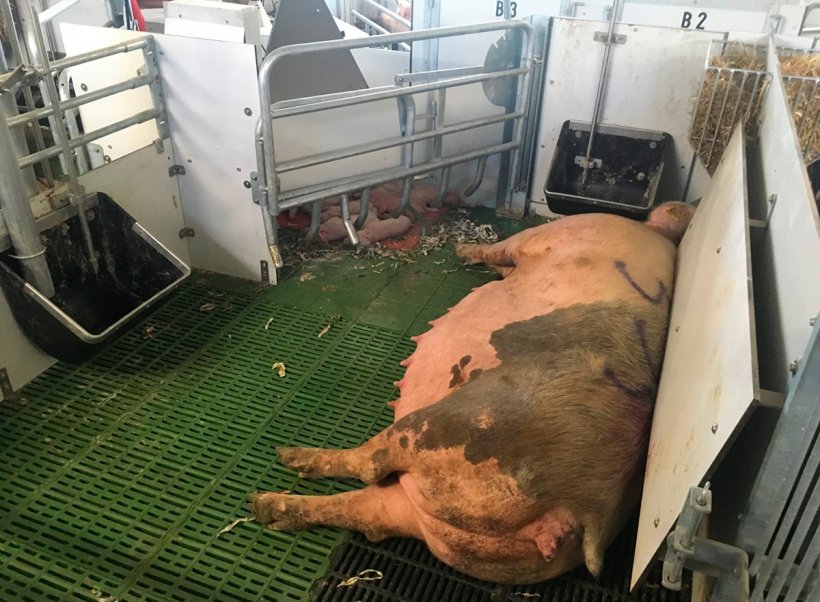
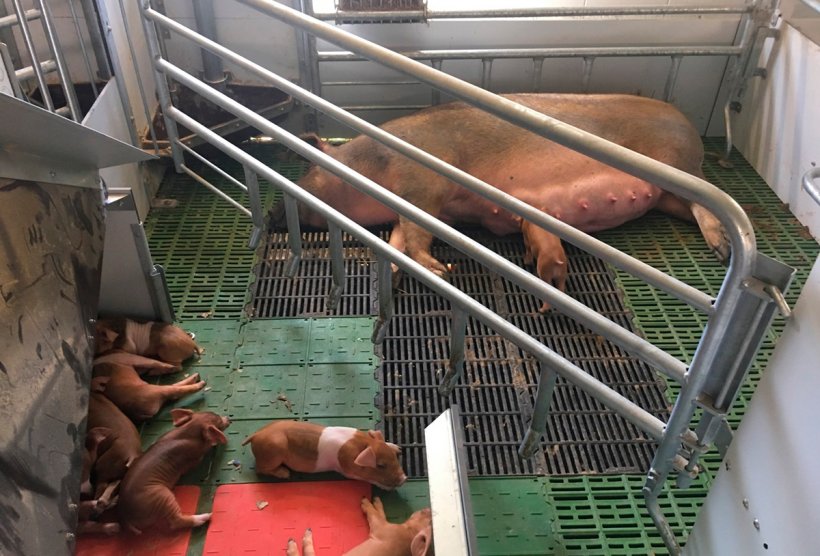
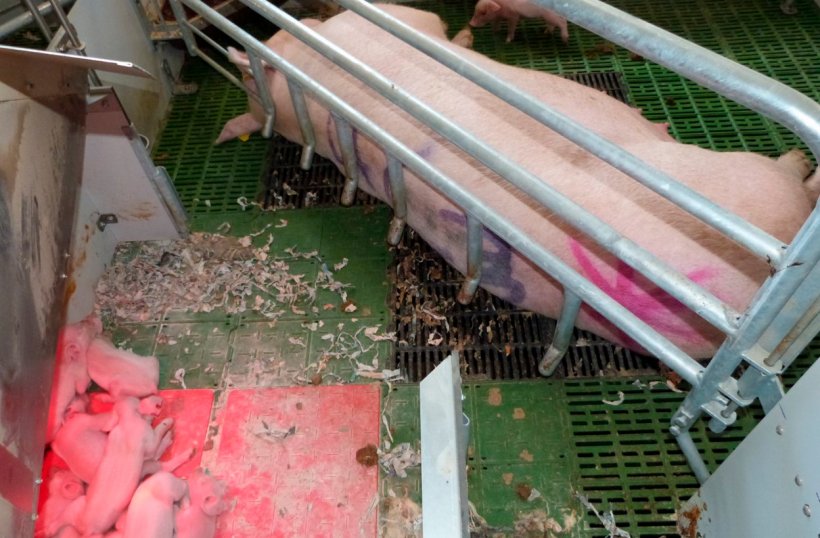
In Denmark there is a growing interest in using temporary confinement systems, especially when building new farms. The system is prepared for future legislative requirements and at the same time is a great improvement in terms of efficiency and animal welfare. The idea behind temporary confinement is that the sows are only restricted when it is necessary and during the rest of lactation they have freedom of movement. The critical time is around farrowing and during the first days of lactation. Results from a Danish study on loose housed sows and sows in SWAP pens showed that the first 4 days after farrowing is a very inactive time for the sows and thus the restrictions does not influence sow behaviour (figure 1). By using temporary confinement, farms have been able to perform at a level that is comparable to traditional crates, and some even better than ever before. For example, several commercial farms in Denmark with sows in SWAP pens produced an average of 34-37 pigs/sow/year with a mortality of 13-15%. Most piglets die within the first 4 days, so protecting them during this time is important (figure 2). Once the critical period is over there are benefits of having the sows loose. Experiences show that when sows are loose, the piglets have better access to the udder. More space in the pens allow room for the large litters and better growth. Freedom to move also improves the condition of the sow and might influence sow longevity.
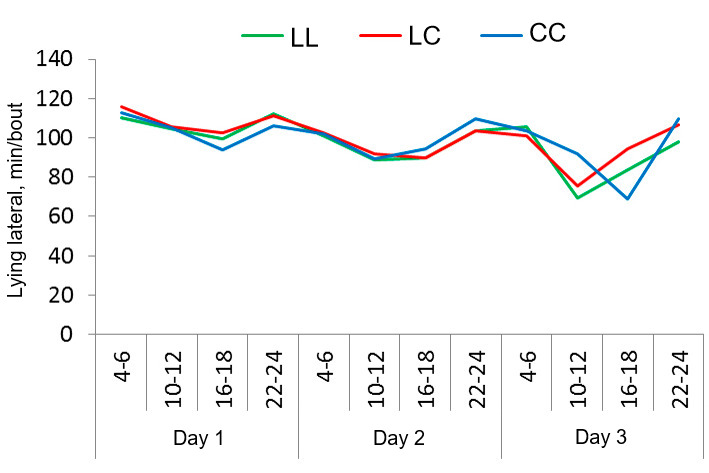
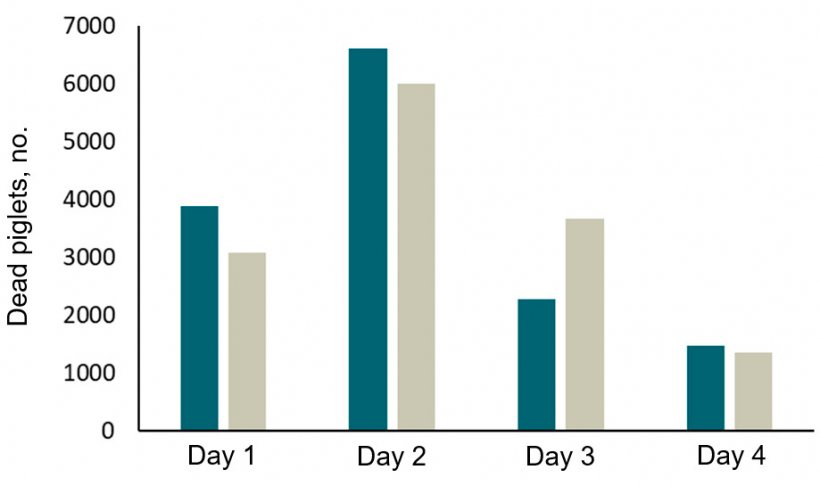
Between 2017 and 2019, free farrowing systems with temporary crating have been tested on a commercial farm in Catalonia. Preliminary results from the assessment of four batches suggest a better growth of piglets during lactation in alternative farrowing systems, especially in SWAP (figure 3). Previous studies described longer suckling events in free farrowing systems related to an increase in oxytocin levels in free farrowing sows. Higher levels of oxytocin in free farrowing sows can be related to lower levels of stress hormones such as cortisol. Piglets from sows in free farrowing systems would suckle more milk and therefore would grow better. An increase in the number of crushed piglets was observed in the SWAP system, in the fourth batch only (figure 4). Changes in the staff of the farrowing unit and a wrong management of the piglets’ nesting area may have caused this increase in the number of crushing events in the SWAP system. Besides this critical situation, the number of crushings was similar between conventional cages, the JLF15 and the SWAP.
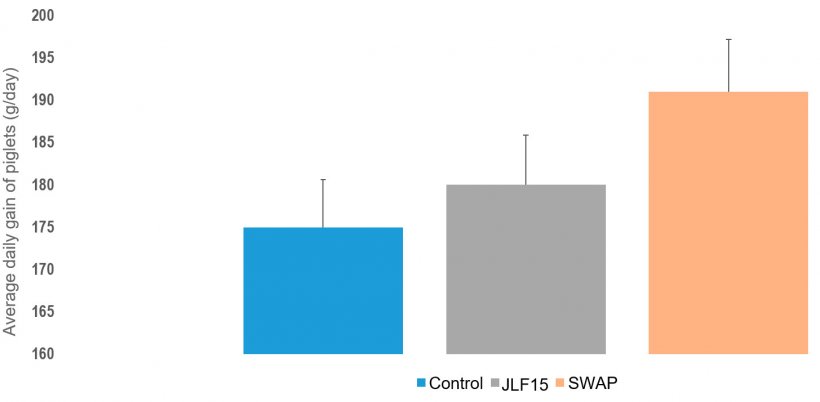
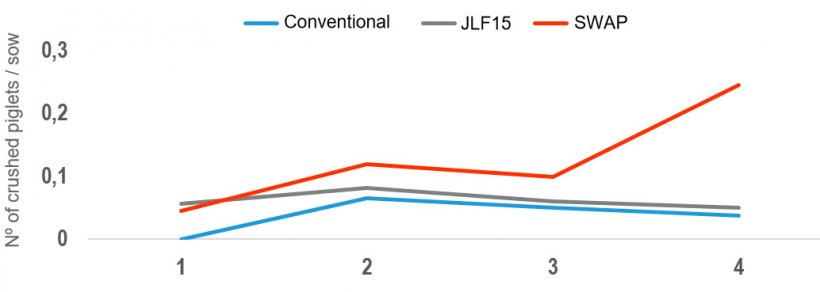

Providing practical solutions is essential to encourage changes. From this field studies on free farrowing systems we can say that temporary crating systems were highly feasible on commercial farms. Working with trained and skilled staff at the farrowing units is a key issue for these systems to achieve their full potential.




